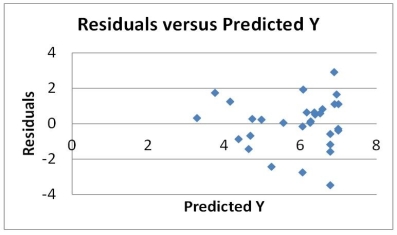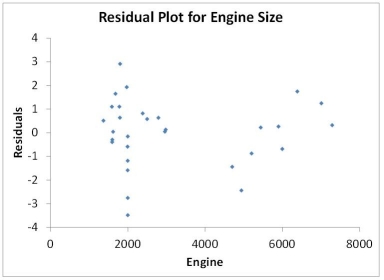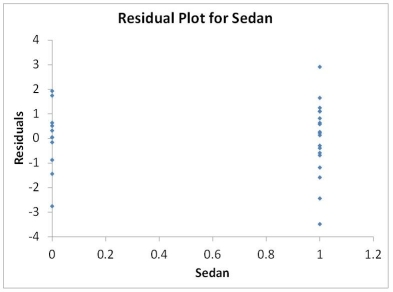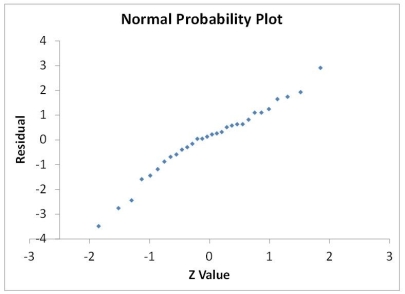TABLE 14-16
What are the factors that determine the acceleration time (in sec.)from 0 to 60 miles per hour of a car? Data on the following variables for 30 different vehicle models were collected:
Y (Accel Time): Acceleration time in sec.
X1 (Engine Size): c.c.
X2 (Sedan): 1 if the vehicle model is a sedan and 0 otherwise
The regression results using acceleration time as the dependent variable and the remaining variables as the independent variables are presented below.  The various residual plots are as shown below.
The various residual plots are as shown below. 


 The coefficient of partial determinations
The coefficient of partial determinations  and
and  are 0.3301,and 0.0594,respectively.
are 0.3301,and 0.0594,respectively.
The coefficient of determination for the regression model using each of the 2 independent variables as the dependent variable and the other independent variable as independent variables (  )are,respectively 0.0077,and 0.0077.
)are,respectively 0.0077,and 0.0077.
-True or False: Referring to Table 14-16,the 0 to 60 miles per hour acceleration time of a sedan is predicted to be 0.7264 seconds lower than that of a non-sedan with the same engine size.
Definitions:
Skin Test
A medical test where a small amount of substance is placed on or under the skin to check for an allergic reaction or disease.
Usual Dose
The common amount of a medication recommended for administration under normal circumstances.
Intramuscular Injection
A method of administering medication deep into the muscles, allowing the drug to be absorbed into the bloodstream quickly.
Mixing Medications
The process of combining different drugs to ensure proper dosing and compatibility, often conducted in healthcare settings.
Q61: Referring to Table 14-16,what is the value
Q100: Referring to Table 14-6 and allowing for
Q118: Referring to Table 13-4,the least squares estimate
Q122: True or False: Referring to Table 13-12,there
Q131: True or False: Referring to Table 16-11,based
Q146: Referring to Table 14-2,for these data,what is
Q150: Referring to Table 13-10,construct a 95% confidence
Q188: True or False: Referring to Table 13-11,the
Q190: The sample correlation coefficient between X and
Q213: Referring to Table 14-7,the department head wants